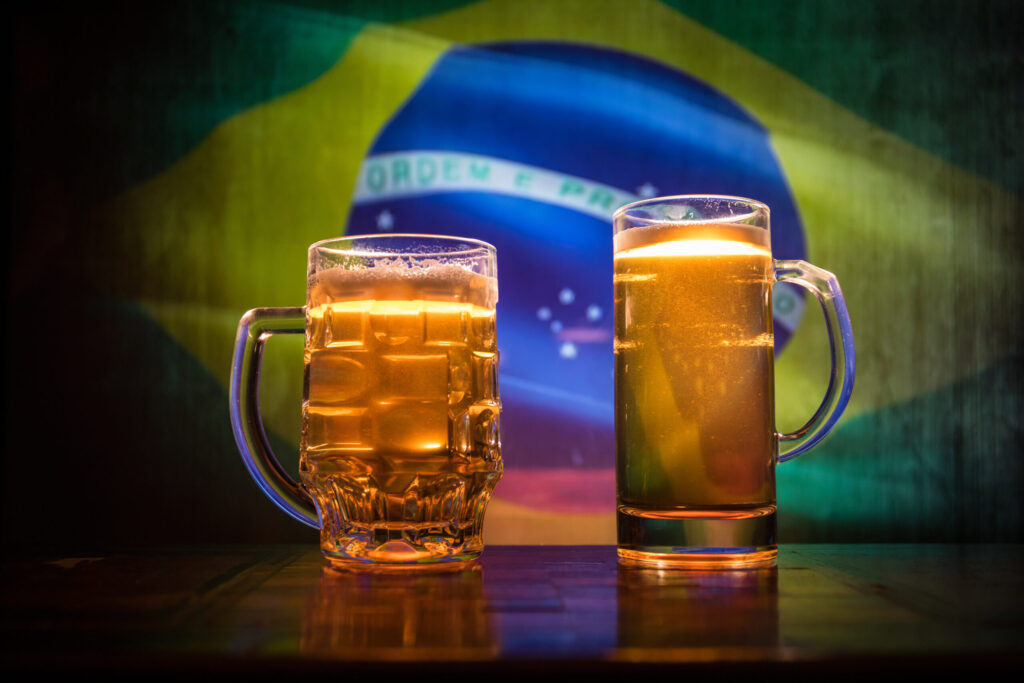Brazil’s Alcohol Tax Overhaul: Simplifying the System for Better Revenue and Health
The Brazilian government is on the brink of making a landmark change to its alcohol taxation policy. This modernization effort aims to create a simplified tax system that boosts alcohol tax revenue while encouraging reduced consumption without bias. Experts argue that alternative strategies under review are much less efficient and effective, leading to a less neutral tax policy.
On July 10, the Brazilian Lower House passed a sweeping tax reform bill. This legislation proposes a specific tax based on liters per alcohol (LPA), calculated by multiplying a product’s alcohol by volume (ABV) percentage by its volume. For instance, a liter of spirit with a 40% ABV would account for 400 ml of pure alcohol, while a liter of beer with a 5% ABV would equate to 50 ml of pure alcohol.
The bill also introduces ad valorem taxes that would supplement the specific taxes, with rates varying by product and potentially increasing with higher ABV. As the bill moves to the Senate, revisions to the text might be suggested.
Currently, Brazil does not impose an excise tax on alcohol; instead, it applies a federal VAT-like tax (IPI) on manufactured and imported goods. The IPI rate is product-dependent, reflecting the government’s value assessment, and varies from 3.9% for beer to 16.25-19.5% for spirits. The federal government also levies the Contribution for the Social Integration Program (PIS) and the Contribution for Financing Social Security (COFINS) taxes on businesses’ gross revenues.
Additionally, Brazilian states impose a VAT tax (ICMS), ranging from 22% to 32% for beers and 25% to 39% for wine and spirits.
The Ideal Alcohol Tax Design
An effective alcohol tax for Brazil should adhere to straightforward principles. Special taxes on alcohol aim to reduce the external harms associated with its consumption, such as drunk driving and property damage. By increasing market prices and decreasing legal consumption through excise taxes, the government can mitigate these harms. The revenue generated can further fund anti-addiction initiatives, safe driving incentives, and educational programs.
Ideally, alcohol taxes should be based solely on the quantity of pure alcohol, eliminating distinctions based on production methods or inputs. This ensures neutrality and efficiency by taxing alcoholic products uniformly according to pure alcohol content. The World Health Organization concurs that consumption is best reduced through taxes based on quantity rather than value.
Should an ideal specific tax system be unfeasible, a hybrid approach could offer a secondary solution. A hybrid system would follow the principles of neutral taxation, centering on specific taxes while minimizing reliance on ad valorem rates that fluctuate with alcohol type or ABV.
Navigating the Complexity of Categorical Tax Systems
Globally, the alcohol industry is highly innovative, with craft brewing significantly transforming markets. In the U.S., craft breweries have increased exponentially, from 359 in 1992 to 9,709 in 2022, according to the Brewer’s Association. These changes have not only diversified flavors but also altered alcohol content, diverging from traditional norms.
Many new products blur traditional categorical lines further. Ready-to-drink cocktails and hard seltzers exemplify this, with alcohol content resembling beer despite diverse production processes. Tax complexities arise when categorizing these diverse products, creating a slow, cumbersome policy adaptation process.
Brazil’s best path may lie in taxing all alcoholic products by pure alcohol content, simplifying the system, boosting revenue, and minimizing the societal harms of alcohol consumption.
Stay ahead of tax policy changes. Subscribe to receive expert insights directly in your inbox.
Subscribe
Share
Twitter | LinkedIn | Facebook | Email



